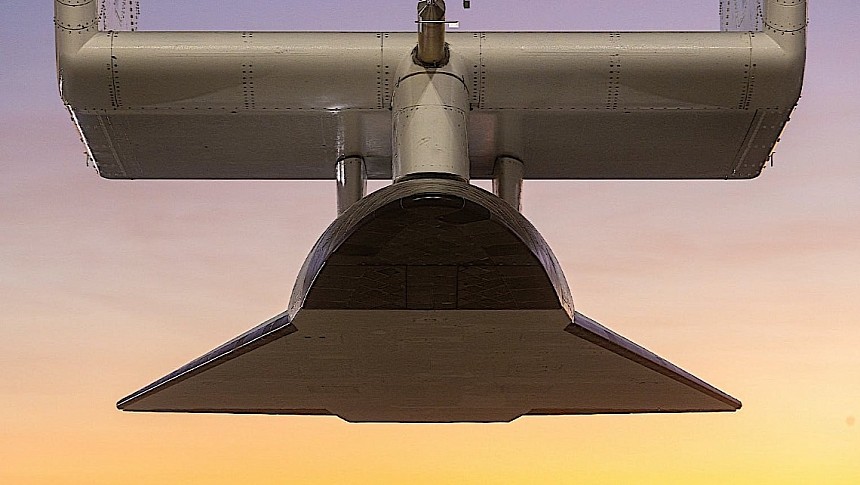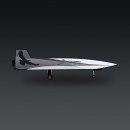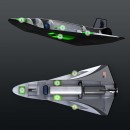If someone had told me just ten short years ago that we would soon be discussing supersonic drones being carried up into the atmosphere by means of twin-fuselage aircraft, I'm not sure I would have believed them. Yet here we are, living in a world where hypersonic drones and twin-fuselage aircraft are commonplace.
Our planet has a number of very large aircraft currently flying, but in terms of wingspan nothing beats the Roc. Operated by a company called Stratolaunch, the twin-fuselage spreads for 385 feet (117 meters) wingtip to wingtip, and has a single purpose in life: work an airborne launch platform for the other flying machines Stratolaunch is developing at the moment.
And by other flying machines, I mean a hypersonic capable device called Talon-A. That would be an autonomous testbed that will be rented to paying customers who seek to test whatever technologies at speeds above Mach 5 (3,800 mph/6,100 kph).
You've probably heard about the Talon before, as it's been under development for quite some time now. And it will probably still be for a while longer, despite the company behind it saying it reached a major milestone in the program.
The current version of the Talon, a device called TA-1, just completed its first powered flight while attached to the Roc aircraft. Called a captive carry flight, the procedure aimed to see how the drone behaves when filled with the fuel it will eventually need to carry on its missions.
The flight was not a short one, as it lasted for almost three and a half hours, but it is now considered a "significant step forward in the company's near-term goal of completing a powered flight" with the machine.
Aside from seeing how it behaves with fuel on board, Stratolaunch also looked at TA-1's telemetry system, something that will be crucial during the upcoming missions for customers.
The test is still young in the company's books, so it's unclear what comes next. Eventually, Stratolaunch will have to conduct Talon's first powered flight, and only then we will see if the efforts made now and in the past paid off.
The American military, which will probably be one of the company's largest customers, seems to believe the tech is worth it, and not that long ago has included the missile-like drone in the Multi-Service Advanced Capability Hypersonic Test Bed (MACH-TB) program.
As per the contract, future versions of the Talon will have to fly five times while carrying various payloads to prove to the military the concept works. That future version of the Talon will likely be the TA-2, which will measure 28 feet (8.5 meters) long, and it will have a wingspan of 11 feet (3.4 meters). Some of the power for it will come from a Ursa Major Technologies engine called Hadley.
And by other flying machines, I mean a hypersonic capable device called Talon-A. That would be an autonomous testbed that will be rented to paying customers who seek to test whatever technologies at speeds above Mach 5 (3,800 mph/6,100 kph).
You've probably heard about the Talon before, as it's been under development for quite some time now. And it will probably still be for a while longer, despite the company behind it saying it reached a major milestone in the program.
The current version of the Talon, a device called TA-1, just completed its first powered flight while attached to the Roc aircraft. Called a captive carry flight, the procedure aimed to see how the drone behaves when filled with the fuel it will eventually need to carry on its missions.
The flight was not a short one, as it lasted for almost three and a half hours, but it is now considered a "significant step forward in the company's near-term goal of completing a powered flight" with the machine.
Aside from seeing how it behaves with fuel on board, Stratolaunch also looked at TA-1's telemetry system, something that will be crucial during the upcoming missions for customers.
The test is still young in the company's books, so it's unclear what comes next. Eventually, Stratolaunch will have to conduct Talon's first powered flight, and only then we will see if the efforts made now and in the past paid off.
The American military, which will probably be one of the company's largest customers, seems to believe the tech is worth it, and not that long ago has included the missile-like drone in the Multi-Service Advanced Capability Hypersonic Test Bed (MACH-TB) program.
As per the contract, future versions of the Talon will have to fly five times while carrying various payloads to prove to the military the concept works. That future version of the Talon will likely be the TA-2, which will measure 28 feet (8.5 meters) long, and it will have a wingspan of 11 feet (3.4 meters). Some of the power for it will come from a Ursa Major Technologies engine called Hadley.

















